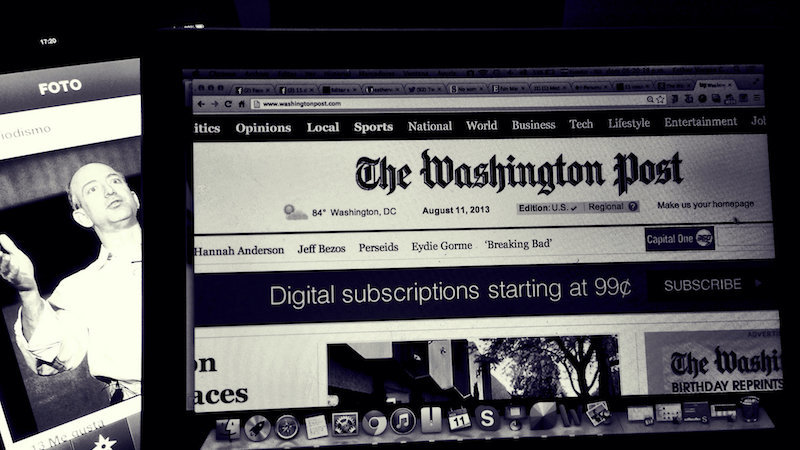Paid content in digital media: options and challenges
In today.s post we will talk about paid content. From the different options to the key points that can help us to understand the current problems of media businesses.

Paid content concept
In the digital era, many media outlets have been exploring (and experimenting) with different options to sell their content online. Most of them are trying to recover from the loss of income due to paper advertising and its possible disappearance (the New York Times CEO has set the date to this event: ten more years).
The problem is very complex, especially regarding profitability. With Internet, many launched their content online in what could be called a dump of the paper version.
This created a mindset of all free in the reader that is now difficult to break. Now there is a need of looking for creative solutions that make the audience pay for the information without thinking that they are receiving the same as before without paying a penny.
"The news business is no longer the news"
As has already been said on multiple occasions, the news business is no longer the news and we have to look for that engagement with the reader with other sources.
We are talking about presenting the information in different formats, customizing content, storytelling and many other dynamics that media outlets are currently implementing to retain the reader and to create loyalty.
To illustrate the problem, a Reuters study on digital media in 2017 points out that, in proportion, one in ten people pays for online content.
The graph below explains the huge differences by countries, with the Nordics being the most willing to pay for content. In Spain is a 4%.
What are the options to explore?
On the other hand, many of the major media are ready to make the leap to the paid content in its multiple versions. However, the doubt remains the same as a few years ago: How to do it well?
Let's see the different payment subscription models:
-
Freemium: The most popular model. It offers free access to part of the content, but charges for additional features, services or virtual benefits.
-
Soft paywalls: The model pursued by The New York Times. Allows a certain number of free items each month before requiring a subscription.
-
Hard paywalls: Requires subscription to access most or all of the digital content.
We could as well include:
- Crowfunding: An alternative method of financing through contributions / donations from individuals.
- Pay per view: Payment per article / content. Blendle is the most popular pay-per-view content platform. They select content from the best English media in the world and the user pay per unit
- Sponsorships, Subscriptions ...
Who is willing to pay?
According to the study published by Reuters, pay audience in 2017 has barely grown compared to the previous year. With one exception: USA. And in a very specific age group: young people under 35.
If we move to Europe, it is precisely in that group where the German is trying to stay closer:. An example: Die Zeit.
Zeit publishes Zeit Campus, a student-oriented magazine and website, and Ze.tt, a viral site similar to BuzzFeed
. @chrisroepke: 35 percent of @zeitonline's readership is under 29 #DME17 pic.twitter.com/q3h3T5tskh
— Joseph Lichterman (@ylichterman) 24 de abril de 2017
In this case, young users still do not pay for content but the publication works in brand loyalty to get these young people today to become subscribers tomorrow.
Without a doubt, the millennial age group is the focus for many publications.
And if we want to make an even more accurate radiography of the reader who can eventually pay for our content, we agree with the points made by Miguel Pellicer in his blog:
- They are not passive consumers
- They take parte in the distribution of the information in social media
- They do not want to pay for content that they do not use or that they can find for free.
- They read content online for many hours a day
- they pay attention to the brand, and, of course, to the editorial line
- They access to the information from different devices, especially from the mobile
- They do not only consume informative content. Also entertainment, lifestyle, etc.
- Users are not a single mass, personalized content is important
Revenue just from advertising: (almost) impossible
In what most experts agree is that, in the current situation, with Facebook and Google taking a large part of the advertising pie (exactly 89% in 2016), it is difficult to survive 100% with just through this income.
And there is an additional problema: ad blockers. More and more users (an estimated 23%) place ad blockers in their browsers so they do not see advertising on the websites they visit. It is a matter of time that this also happens in mobile browsing.
In conclusion:
The scenario continues to be very changeable for the industry and we don't see one model or another consolidating.
What is clear, and something that the Openhost team insists on, is that content is king.
Offer good stories to users and above all, create that engagement is the first stone on the road ...
So, now that you know more about paywalls in digital media, what are you waiting for experimenting with your own site? With Opennemas you can create your own digital site completely free. Do you want to know how? Click here, and we'll tell you how.






